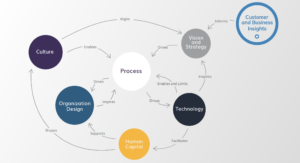As customers, competitors and technologies evolve at a rapid rate, business leaders must be proactive to effectively address the threat of disruption and drive competitive advantage in the marketplace.
This has resulted in a dramatic increase in the number of significant change initiatives that companies have launched in recent years. And we do not see this slowing down as the relentless pace of change continues to increase exponentially. Constant and rapid change is now the norm.
Because of these dynamics, transforming your business continuously in an agile fashion is key to success. Companies that can pivot quickly in transforming their business will have a significant competitive advantage. Those that don’t will cease to exist.









